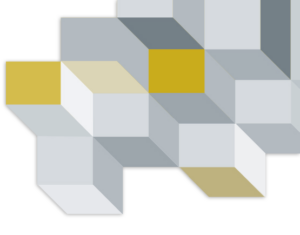Science meets media design in an interdisciplinary project to strengthen the exchange about applications of artificial intelligence.
How can AI support the selection of suitable medication, make medical diagnoses more efficient or help in the analysis of MRI images? Technologies based on artificial intelligence are gaining more and more influence in various areas of medical research and practice – and are becoming increasingly relevant for our society.
To address this development, the RHET AI Center collaborated with partners from medicine and animation research to develop an interdisciplinary teaching cooperation aimed at stimulating dialogue and discussion: Science Animated – Explaining Uses of AI in Medicine. For one semester, ten students from the fields of medicine, biology, media studies and rhetoric worked together in interdisciplinary teams. Their common goal: strengthening their skills in visual science communication – and fostering the public discourse on AI applications with vivid videos. As a result, a total of four explainer videos on the topic of "AI in medicine" were created.
The explainer videos
During the development of the videos, accompanying workshops and peer feedback elements provided a structuring framework for the design process. However, the student teams were completely free in their specific focus, artistic design and choice of target group. While one team, for example, set itself the goal of appealing primarily to children ("A Voyage Through a Crowded Cell World"), other teams focused on broader target groups. All of this contributed to the diversity of the creative processes and results – and led to four unique videos:
Which Pill to Choose?
How Machine Learning Can Improve Medical Prescriptions
by Felix Freuer / Wiktoria Palka
How Does Distributed Analytics Work?
by Alexander Flisiak / Aina Segura
A Voyage Through a Crowded Cell World:
How Artifical Intelligence May Support Medical Diagnosis
by Neus Gil Noguera / Kim Benjamin Rösener / Min Zhou
Machine Learning in Radiology:
How Neural Networks Can Help in Analyzing Medical Images
by Dennis Brunnecker / Alexander Kempf
Strengthening the dialog on applications of artificial intelligence in medicine
The explanatory videos developed by the students are intended as an invitation to further exchange – and to promote dialog between science and society. The videos have already been presented in a variety of contexts and formats: In a first step, they were shown as part of the "Cyber and the City" exhibition at the Tübingen City Museum (February 2023 – January 2024). There, together with other exhibits, they pursued the goal of making applications of artificial intelligence tangible and creating a space for discussion. In a further step, the videos also found their way onto the big screen: the participating students and the course leader team presented the videos at an event at the Arsenal cinema in Tübingen in April 2023. In addition to the presentation of the explanatory videos, there were also insights into the creative processes behind the videos as well as a variety of opportunities to talk about the topic and join in the discussion.
Direct links to current research
In order to establish direct links to current research topics, four external experts researching AI applications in medicine presented key aspects of their work to the participating students at the start of the course. These impulses formed the starting point from which the students developed their respective explanatory videos in interdisciplinary teams. The four experts were also available to advise the students – in addition to overall guidance given by the course leader team – on research related questions during the development of the videos:
- Dr. Stephanie Biergans
(University Hospital Tübingen):
Data Management & Distributed Analytics - Prof. Dr. med. Sergios Gatidis
(Max Planck Institute for Intelligent Systems, Tübingen):
Deep Learning in Medical Imaging - Dr. med. Alexander Tolios
(Medical University, Vienna)
AI Modelling in (Pre)Clinical Settings - Prof. Dr. Manfred Claassen
(University Hospital Tübingen):
Machine Learning in Translational Single-Cell Biology
Background: a (teaching) cooperation between rhetoric and medicine
The practical course was part of the seminar series Visual Science Communication in Medicine offered since the summer semester 2021 by Michael Pelzer (Research Center for Science Communication) and PD Dr. Markus Löffler (University Hospital Tübingen). The interdisciplinary teaching and skills development concept developed as part of this seminar series formed the basic framework of the course.
With regard to the specific training of students in the field of creating explanatory videos, the course leader team was further supplemented and supported by Naima Alam (Institute of Media Studies), who contributed her extensive expertise in the field of animated film design. Alexandra Geßner (Machine Learning ⇌ Science Colaboratory) was also involved as an expert in the field of machine learning in the first half of the semester – and provided valuable insights and advice on the specialist background.





